Updated 10/28/2022 with suggestions from comments
Two weeks ago, the Salt Lake Tribune came out with an article about a new horror novella starring an active Latter-day Saint protagonist. The article caused some consternation on the Association for Mormon Letters Discord server with a quote from the author stating that, “Most LDS writers aren’t writing horror,” along with the original headline proclaiming that Mormon horror was “new territory.”
Mormon horror is far from new, and several authors are actively producing it. In short order, our Discord group was able to come up with the following list of Mormon-related horror stories. It’s by no means comprehensive but illustrates the point that Mormon horror, in fact, exists.
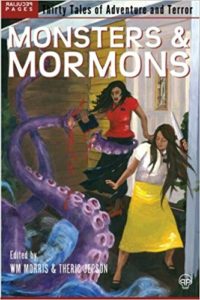 The anthology Monsters and Mormons, edited by William Morris and Theric Jepson, is a collection that exploits and celebrates “historical associations of Mormon deviance, supernaturalism, and strangeness.” Included are stories of demon-fighting bishops, Lovecraftian horror, baptism for the dead in the zombie apocalypse, and so much more.
The anthology Monsters and Mormons, edited by William Morris and Theric Jepson, is a collection that exploits and celebrates “historical associations of Mormon deviance, supernaturalism, and strangeness.” Included are stories of demon-fighting bishops, Lovecraftian horror, baptism for the dead in the zombie apocalypse, and so much more.
The Mormon Lit Blitz has published several horror entries over the years. Most memorable to me are the mission horror story “There Is No Release” by Jonathan Olfert and “A Voice Not Crying in the Wilderness” by Jonathon Penny, but there are others.
Many of Orson Scott Card’s early short stories are in the horror genre; you can read them in his collection The Changed Man, or in his larger collection Maps in a Mirror. (Be forewarned: you may not be able to sleep after reading “Eumenides in the Fourth Floor Lavatory.”) The most particularly Mormon of these stories is “Lost Boys” which was later turned into a novel of the same name. (This story is slightly controversial, as the horror aspects are based on Card’s own experiences raising a disabled child.) Two other non-LDS horror novels by Card are Treasure Box and Homebody.
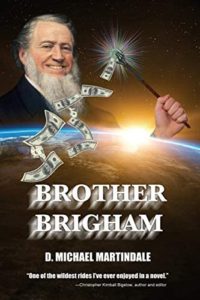 Brother Brigham by D. Michael Martindale is, from what I can tell, an LDS take on the evil angel story.
Brother Brigham by D. Michael Martindale is, from what I can tell, an LDS take on the evil angel story.
Angel Falling Softly by Eugene Woodbury is a Mormon vampire story.
Not sure how much Mormonism is directly present versus implied in the text, but Dispirited by Luisa Perkins is a ghost story involving astral projection and other spooky powers.
Several stories in William Morris’s The Darkest Abyss: Strange Mormon Stories collection will also fall into the horror genre. Read a sample on By Common Consent.
A few of the stories in Phyllis Barber’s short story collection Parting the Veil can be classified as horror.
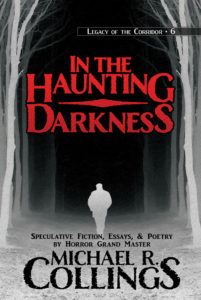 Michael R. Collings is not only a writer of horror (his collection In The Haunting Darkness was recently published as part of Hemelein’s Legacy of the Corridor series), but a scholar of horror who has published multiple books analyzing Stephen King’s work. He received the Grand Master Award from the World Horror Convention in 2016.
Michael R. Collings is not only a writer of horror (his collection In The Haunting Darkness was recently published as part of Hemelein’s Legacy of the Corridor series), but a scholar of horror who has published multiple books analyzing Stephen King’s work. He received the Grand Master Award from the World Horror Convention in 2016.
Lee Allred’s collection Down the Arches of the Years (also from the Legacy of the Corridor series) contains his Mormon vampire story “Where Nothing Lives But Crosses” and several stories in a shared universe called “Clockwork Desert” where missionaries fight Lovecraftian monsters.
Steven L. Peck’s A Short Stay in Hell certainly qualifies as an existential horror novel, and some of his short stories fall into the horror genre as well.
David J. West has written a series of dark Westerns starring Porter Rockwell. The first novel is Scavengers.
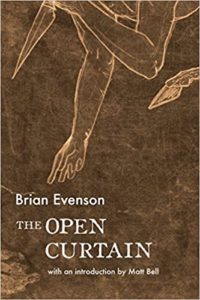 Brian Evenson is known for his horror writing. Several stories with Mormon/religious themes are collected in his chapbook, Prophets and Brothers, including “Blessing the Dog,” “Sanctified, In the Flesh,” and “The Prophet” (about a fundamentalist Mormon trying to dig up the body of Ezra Taft Benson). Also there’s also some Mormon flavor in his novels Father of Lies, about a pedophile bishop, and The Open Curtain, in which the main character becomes preoccupied with a murder committed in the early 1900s by William Hooper Young, a grandson of Brigham Young.
Brian Evenson is known for his horror writing. Several stories with Mormon/religious themes are collected in his chapbook, Prophets and Brothers, including “Blessing the Dog,” “Sanctified, In the Flesh,” and “The Prophet” (about a fundamentalist Mormon trying to dig up the body of Ezra Taft Benson). Also there’s also some Mormon flavor in his novels Father of Lies, about a pedophile bishop, and The Open Curtain, in which the main character becomes preoccupied with a murder committed in the early 1900s by William Hooper Young, a grandson of Brigham Young.
Paul Bailey, an author otherwise known for LDS works, wrote the acclaimed horror classic Deliver Me from Eva, which includes a psychotic dwarf, performance enhancement through cranial manipulation, and a gender-flipped Bluebeard archetype.
DJ Butler’s work has some of the horror elements, particularly his story in the States of Deseret collection and his Cunning Man series, written with Aaron Michael Ritchey and published by Baen, which deal with LDS folk magic, angels, and demons. Plus his short story collection The Florilegium of Madness dabbles in various horror subgenres.
Larry Corriea’s Monster Hunter International has some intersections with LDS theology (particularly Nemesis, which was referred to as “possibly the best Pre-Existence story I’ve read” on the Discord).
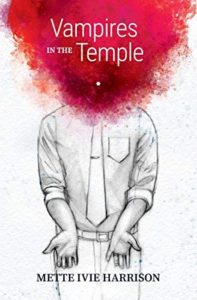 Don’t forget Mette Ivie Harrison’s Vampires in the Temple, and this month’s newly released sequel Genealogy of Werewolves.
Don’t forget Mette Ivie Harrison’s Vampires in the Temple, and this month’s newly released sequel Genealogy of Werewolves.
For those who want a more hands-on scare, check out Rachel Helps’s self-published interactive fiction game Skillick’s Bride.
And of course, don’t forget the horror issue of Irreantum, Fearreantum, which includes an essay on LDS folklore with a horror-vibe as well as horror stories in every Mormon setting from the Book of Mormon to contemporary times, and even horror poetry.
Republished in Fearreantum, but deserving of its own line is Jack Harrell’s “Calling and Election.” This is perhaps the most Mormon religious horror story I’ve read. Opening with a deal with a mysterious figure and playing upon mysterious parts of LDS lore, this story and its lack of resolution still shake me every time I read it.
We also came up with several other LDS horror authors who aren’t writing explicitly Mormon work: Dan Wells, Michaelbrent Collings, Josh Allen (middle grade horror), and Virginia Baker.
Additional suggestions from readers:
C David Belt has a trilogy of novels in which vampires are the children of Lilith. According to his website, the doctrines of his LDS faith feature prominently in the novel.
Steven Carter’s novel The Hand of Glory is a YA horror/ghost story, with 19th century polygamy as a driving factor.
More writers of mainstream horror: Mercedes M Yardley, W. H. Pugmire (interviewed at Motley Vision)
And some Mormon horror films, most suggested by Randy Astle:
- The Next Door & Cryo (both directed by Barrett Burgin)
- Carnival of Souls (filmed at Saltair)
- Las Flores del Miedo & The Dead, the Devil, and the Flesh (both directed by José María Oliveira, the first stake president in Spain)
- Missionary
- The Book of Zombie (plot: all the Mormons in a small Utah town suddenly become zombies)
- Evil Angel (Richard Dutcher)
- Trapped by the Mormons (both the 1922 silent film and the 2005 remake)
- Plan 10 from Outerspace (Kolob, anyone?)
- Attack of the Giant Brine Shrimp
- Deadstream
Of course, it’s difficult for anything to be truly new in fiction. And the fact that the journalist reporting on this book (or at least the headline writer) believed that Mormon horror had never been done speaks to the common problem of much Mormon writing nowadays: how to get the word out.
So help us spread awareness about spooky Mormonism by sharing this list. And be sure to check out the original book that started this discussion, Declan Hyde’s “The Resurrection Box.” Please add any further pieces we may have missed in the comments.
And happy hauntings.

C David Belt’s works are definitely LDS horror.
Don’t forget my son Michaelbrent Collings, whose scores of novels and stories have explored darkness in all of its manifestations, and its intricate connections with redemption.